

上海市典型住宅区生活空间结构模式研究
|
傅英姿(1993— ),女,硕士,主要从事城市规划空间与行为、城市大数据等方面研究。E-mail: yingzi@tongji.edu.cn |
收稿日期: 2020-11-03
修回日期: 2021-03-01
网络出版日期: 2021-06-28
基金资助
国家自然科学基金项目(41771170)
Living space structural pattern of typical residential areas in Shanghai
Received date: 2020-11-03
Revised date: 2021-03-01
Online published: 2021-06-28
Supported by
National Natural Science Foundation of China(41771170)
随着上海市社会阶层分化与居住空间分异日益明显,不同住宅区的复杂背景和多元属性塑造了多样化的生活空间,折射出不同的生活方式与生活质量。论文选取253个典型住宅区作为研究样本,利用以手机信令数据为主、问卷调查数据为辅的研究方法,探究上海市典型住宅区的生活空间的结构模式。分析得出典型住宅区生活性活动的范围和边界、主要集聚区和通道。范围和边界主要通过活动的核心区域和稳定区域加以描述,主要集聚区主要为城市的主中心、住宅区最近的副中心及住宅区近距离圈层;通道则为轨道交通线路。根据其特征进行分类和总结,共划分出4个大类、15个小类的住宅区生活空间结构模式。探究典型住宅区的生活空间的结构,对生活圈建设、城市中心体系规划、交通设施建设等规划政策的制定具有现实意义。
傅英姿 , 王德 . 上海市典型住宅区生活空间结构模式研究[J]. 地理科学进展, 2021 , 40(4) : 565 -579 . DOI: 10.18306/dlkxjz.2021.04.003
China is in a period of comprehensive transformation of economic and social developments. Urban development has shifted from expansion to focusing on the improvement of quality, and gradually began to focus on the quality of life of residents. Living space has become an important factor reflecting the quality of urban development. With the increasingly clear social class stratification and residential space differentiation in Shanghai, the complex background and multiple attributes of different residential areas shape a variety of living spaces, reflecting different life styles and quality of life. This study selected 253 typical residential areas as the research samples, and used mobile signaling data, supplemented by questionnaire survey data, to explore the structural pattern of living space of typical residential areas in Shanghai. Both the mobile signaling data and the questionnaire survey data were used to calculate the scope and boundary of daily activities, as well as the main nodes and channels of the activity network. It is found that the main center, subcenters, and other urban centers attract residents' daily activities and thus become nodes of the network; while rail transit makes activities extend and spread and become channels of activities by shortening travel time cost. The influence degree of urban centers and rail transit stations on residential areas can basically explain the spatial distribution of daily activities. Under the influence of these factors, 15 typical structural patterns have been formed. Among them, the main center has medium-strong influence, the subcenters have medium influence, and the structural mode of rail transit has the highest influence. Exploring the structure of living space in typical residential areas is of practical significance for the development of planning policies such as life circle construction, urban center system planning, and transportation facility construction.
Key words: living space; structural pattern; mobile signaling data; residential area; Shanghai
表1 住宅区样本选择参考因素及其分类Tab.1 Factors considered in the selection of residential area samples and classification |
| 参考因素 | 分类 | ||||||||||
|---|---|---|---|---|---|---|---|---|---|---|---|
| 空间分布 | 内环内、内环—外环、郊区新城、其他地区 | ||||||||||
| 与轨道交通站点距离 | 小于1.5 km、1.5~3 km、大于3 km | ||||||||||
| 住宅区类型 | 历史性住区(2类)、普通居民楼、保障性住房、商品房、别墅 | ||||||||||
表2 日常活动调查(2017年)中的基本生活活动Tab.2 Basic residential activities in the daily activity survey, 2017 |
| 活动大类 | 活动细分 |
|---|---|
| 个人事务 | 睡眠、用餐、个人护理、看病就医、银行/邮局等 |
| 家庭事务 | 买菜、陪伴孩子、照顾孩子、照顾其他家人、接送孩子、接送其他家人 |
| 购物(非食材) | 实体商店购物、网上购物 |
| 娱乐休闲 | 看书/电视/电影、体育锻炼、观光旅游、个人网上休闲娱乐 |
| 社交活动 | 联络活动(上网/电话)、探亲访友、接待亲朋、参加宴会/宴席 |
| 其他 | 上述活动外的其他活动 |
注:加下划线部分表示直接纳入基本生活活动;斜体表示选取其中近距离(1.5 km内)、短时间(1 h内)的活动纳入基本生活活动;其他则不纳入基本生活活动。 |
表3 活动的边界及范围分类总结Tab.3 Summary of the boundary and scope of activities of different modes |
| 分类 | 主要活动场所 | 特征 |
|---|---|---|
| 单中心 | 住宅区周边 | 高度集聚、近距离 |
| 带状 | 住宅区周边、轨道交通沿线、中心城区 | 连绵向心、中远距离 |
| 蝌蚪形 | 住宅区周边、轨道交通沿线、中心城区 | 相对集聚、向心长尾、中远距离 |
| 多中心 | 住宅区周边、中心城区、郊区新城、其他建设成熟地区 | 多点集聚、间断性、长距离 |
表4 住宅区生活空间结构及其属性Tab.4 Residential living space structure and properties |
| 大类 | 细分小类 | 结构 | 区位特征 | 主中心 | 副中心 | 对应形态 | 数量/个 |
|---|---|---|---|---|---|---|---|
| 近距离圈层 主要作用 | 孤立型 |  | 郊区 非新城 | 无影响 <5% 极远距离 | 无影响 <5% 远距离 | 单中心 | 6 |
| 主中心弱影响型① |  | 近外环 | 弱吸引 5%~10% 中距离 | 无影响 <5% 远距离 | 蝌蚪形 | 14 | |
| 主中心弱影响型② |  | 近外环 无轨道 交通 | 弱吸引 5%~10% 中距离 | 无影响 <5% 远距离 | 多中心 | 9 | |
| 双弱影响型① |  | 外环外 轨道交通 末端 | 弱吸引 5%~10% 中距离 | 弱吸引 5%~10% 近距离 | 蝌蚪形 | 18 | |
| 双弱影响型② |  | 外环外 2条轨道交通线 | 弱吸引 5%~10% 中距离 | 弱吸引 5%~10% 中距离 | 多中心 | 5 | |
| 主中心 主要作用 | 主中心型 |  | 内环内 | 极强吸引 >50% 重合 | 无影响 <5% 近距离 | 单中心 | 8 |
| 主中心强影响型① | 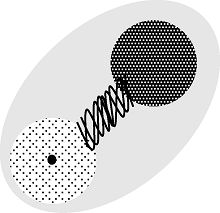 | 外环内 | 较强吸引 10%~50% 近距离 | 无影响 <5% 近距离 | 带状 | 49 | |
| 主中心强影响型② | 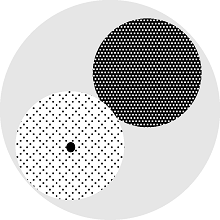 | 外环内 | 较强吸引 10%~50% 极近距离 | 无影响 <5% 近距离 | 单中心 | 10 | |
| 副中心 主要作用 | 新城型 | 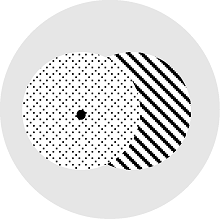 | 郊区 新城 | 无影响 <5% 极远距离 | 强吸引 >30% 重合 | 单中心 | 39 |
| 中强影响型 |  | 近外环 | 中吸引 5%~30% 中距离 | 强吸引 >30% 重合 | 蝌蚪形 | 24 | |
| 大类 | 细分小类 | 结构 | 区位特征 | 主中心 | 副中心 | 对应形态 | 数量 |
| 多因素 复杂作用 | 副中心中影响型 | 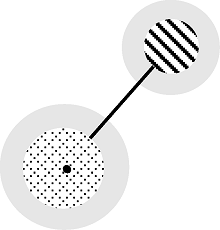 | 郊区 非新城 | 无影响 <5% 远距离 | 中吸引 5%~30% 中距离 | 多中心 | 16 |
| 双中影响型① |  | 外环内 | 中吸引 5%~30% 近距离 | 中吸引 10%~30% 重合 | 带状 | 14 | |
| 双中影响型② | 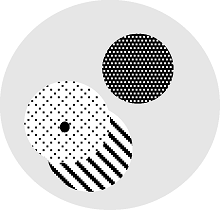 | 外环内真如副中心 | 中吸引 5%~30% 极近距离 | 中吸引 10%~30% 重合 | 带状 | 11 | |
| 双中影响型③ |  | 南汇新城 | 中吸引 5%~30% 极远距离 | 中吸引 10%~30% 重合 | 多中心 | 3 | |
| 中弱影响型 | 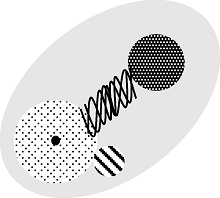 | 外环内 | 中等吸引 10%~30% 近距离 | 弱吸引 5%~10% 近距离 | 带状 | 27 |
图例 |
| [1] |
上海市规划和自然资源局. 《上海市城市总体规划(2017—2035年)》的创新实践[J]. 城乡规划, 2019(1):94-105.
Shanghai Urban Planning and Natural Resources Bureau. Innovative practice of "Shanghai master plan (2017-2035)". Urban and Rural Planning, 2019(1):94-105.
|
| [2] |
柴彦威. 城市空间[M]. 北京: 科学出版社, 1999.
|
| [3] |
王兴中. 中国城市生活空间结构研究[M]. 北京: 科学出版社, 2004.
|
| [4] |
张艳, 柴彦威. 生活活动空间的郊区化研究[J]. 地理科学进展, 2013, 32(12):1723-1731.
|
| [5] |
|
| [6] |
兰宗敏, 冯健. 城中村流动人口日常活动时空间结构: 基于北京若干典型城中村的调查[J]. 地理科学, 2012, 32(4):409-417.
|
| [7] |
傅行行, 申悦. 面向社区生活圈构建的郊区居民社区依赖性研究: 以上海市为例[J]. 地理科学进展, 2019, 38(6):818-828.
|
| [8] |
塔娜, 柴彦威, 关美宝. 北京郊区居民日常生活方式的行为测度与空间—行为互动[J]. 地理学报, 2015, 70(8):1271-1280.
|
| [9] |
申悦, 柴彦威. 基于GPS数据的北京市郊区巨型社区居民日常活动空间[J]. 地理学报, 2013, 68(4):506-516.
|
| [10] |
周素红, 邓丽芳. 基于T-GIS的广州市居民日常活动时空关系[J]. 地理学报, 2010, 65(12):1454-1463.
|
| [11] |
吴承照. 游憩效用与城市居民户外游憩分布行为[J]. 同济大学学报(自然科学版), 1999, 27(6):718-722.
|
| [12] |
潘海啸, 王晓博,
|
| [13] |
|
| [14] |
王波, 甄峰, 张浩. 基于签到数据的城市活动时空间动态变化及区划研究[J]. 地理科学, 2015, 35(2):151-160.
|
| [15] |
王德, 傅英姿. 手机信令数据助力上海市社区生活圈规划[J]. 上海城市规划, 2019(6):23-29.
|
| [16] |
王德, 李丹, 傅英姿. 基于手机信令数据的上海市不同住宅区居民就业空间研究[J]. 地理学报, 2020, 75(8):1585-1602.
|
| [17] |
柴彦威. 以单位为基础的中国城市内部生活空间结构: 兰州市的实证研究[J]. 地理研究, 1996, 15(1):30-38.
|
| [18] |
柴彦威, 张雪, 孙道胜. 基于时空间行为的城市生活圈规划研究: 以北京市为例[J]. 城市规划学刊, 2015(3):61-69.
|
| [19] |
王立, 王兴中. 城市社区生活空间结构之解构及其质量重构[J]. 地理科学, 2011, 31(1):22-28.
|
| [20] |
杨俊宴. 亚洲城市中心区空间结构的四阶原型与演替机制研究[J]. 城市规划学刊, 2016(2):18-27.
|
| [21] |
吴承照. 城市旅游的空间单元与空间结构[J]. 城市规划学刊, 2005(3):82-87.
|
| [22] |
张侃侃. 城市社区体系空间形成机制下的空间结构可获性研究:以太原市坞城街道办事处辖区为例[D]. 西安: 西北大学, 2012.
|
| [23] |
柴彦威, 李春江, 张艳. 社区生活圈的新时间地理学研究框架[J]. 地理科学进展, 2020, 39(12):1961-1971.
|
/
| 〈 |
|
〉 |